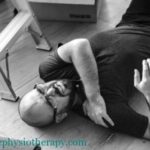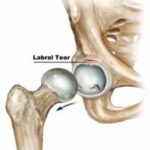What is a Deltoid Ligament
The Deltoid Ligament is a connective tissue band that connects the lower leg bone (tibia) to the inner side of your ankle. As with most joints of the body, there is a ligament on either side to provide stability. This ligament is prest on the inner side (medially). It’s triangular in shape. This ligament supports the ankle and prevents it from over-rotation to the outer side. It consists of deep and superficial fibers.
Tear of deltoid ligament is rare due to its inherent strength and the anatomy of the ankle. A deltoid ligament tear or sprain may be caused by a severe trauma resulting in outward twisting of the ankle, which is usually associated with fibular fracture.
Symptoms of Deltoid Ligament Tear
Deltoid ligament tear is not a common injury, as mentioned earlier, often results from severe trauma leading to outward twisting of the ankle. Aside from an acute injury, a deltoid ligament tear can also result from excessive overuse or wear and tear of the ligament.
Since this ligament supports the arch of the foot, people who have knock-knees and have flat feet are generally more likely to injure the ligament. Common symptoms of deltoid ligament tear include pain around the inner ankle, may radiate to the inner foot, swelling, and bruising. The severity of the symptoms varies according to the extent of the injury.
Diagnosis:
X-ray images may be needed to rule out any ankle and foot bone abnormalities, possibly an avulsion/ fracture of bone at the injured site. MRI imaging of the ankle may be needed to evaluate the severity of deltoid ligament tear and sprain.
Grades of Deltoid Ligament Tear
Treatment of deltoid ligament tear and sprain depends on the extent of the damage. Doctors usually classify ligament injuries into three categories:
- Grade I injury – This results from stretching of the deltoid ligament and is accompanied by minor symptoms. The ankle may be painful, but it is possible to bear weight on the foot.
- Grade II injury – This involves a partial deltoid ligament tear, which is associated with more pain. Weight-bearing on the involved foot is not possible.
- Grade III injury – This involves a complete deltoid ligament tear. Although most injuries to the deltoid ligament can be treated with rest and ice application, a severe injury may need surgical repair.
Treatment of Deltoid Ligament Tear
The Physiotherapist progresses through the following stages to treat the condition, pain, inflammation, and swelling control.
The initial treatment can be abbreviated as PRICE – Protection, Rest, Ice, Compression, and Elevation.
- Rest: In the early phase, walking is quite difficult with a sprained ankle. The primary aim is to provide some active rest from pain-provoking postures and movements. Movements that provoke the pain should be stopped. In most cases, the non-weight bear is preferred. An ankle walking boot, a supportive ankle brace, or crutches are used for this purpose.
- Ice is a simple and effective means to reduce pain and swelling. Apply for 10-15 min every 3 to 4 hours during the initial phase.
- Compression: A compression bandage, compression stocking, or kinesiology supportive taping can help to both support the injured soft tissue and reduce excessive swelling.
- Elevation: Elevating the injured ankle will assist gravity to reduce excessive swelling around the ankle.
A physiotherapist can use a range of helpful modalities, pain-relieving techniques, strapping, and dry needling to reduce the pain Anti-inflammatory medication may help reduce your pain and swelling.
Achieve Full Range of Ankle Movement
If the joint is protected appropriately with adequate immobilization in a proper position the torn ligaments will successfully reattach and heal at a normal functional length. Scar maturation may take 6-8 weeks.
During this time, it is important to lengthen and orientate the healing scar tissue via massage and exercises designed to address a joint range of motion, muscle length, and normal neural tissue motion.
A physiotherapist should not overstretch the ligaments and soft tissue, or it may develop a passively unstable ankle.
Restoration of Muscle Strength
The muscles around the ankle and foot need to be strengthened in cases of a syndesmosis injury. It is important to provide normal dynamic ankle control and function.
The strength and power should be gradually progressed from non-weight bear to partial and then full weight bear and resistance loaded exercises.
Normalize Foot Biomechanics
In order to prevent a recurrence, the arch of the foot and its control should be assessed properly. In some instances, a foot orthotic (shoe insert) may be required.
Restore High Speed, Power, Proprioception, and Agility
Most sprained ankle injuries occur during high-speed activities, which place enormous forces on the ankle and adjacent structures.
Balance and proprioception are both known to be adversely affected by injuries such as a sprained ankle. To prevent a re-injury, both aspects need to be assessed and re-trained.
In order to prevent a recurrence, proper guidelines and exercises should be taught to address these important components of rehabilitation to both prevent a recurrence and improve sporting performance.
Depending on what sport or lifestyle an athlete entails, speed, agility, proprioception, and power program should be customized to prepare for a light similar sport-specific training.
Return to Sport
A physiotherapist should discuss sports-specific goals and frames the time schedule and training to achieve an optimal level of fitness to resume the sport.





